Support us
As a charity we rely on your donations to fund our free exhibitions, school activities and online resources
Empowering medical excellence, shaping healthcare futures.
In 1753 James Lind published an account of a planned clinical experiment on the effects of citrus fruits on scurvy. This experiment was to change the course of history. In 1497 a Portuguese ship, commanded by Vasco da Gama, sailed around the Cape of Good Hope and established on the Malabar coast of India the first European trading centre beyond the Mediterranean. Of his crew of 160 men, 100 died of scurvy. A similar fate fell on the crews of the British, French, Spanish and Dutch ships that explored Asia and the Americas in the next two hundred and fifty years. Although it was not until 1795 that a naval surgeon, Gilbert Blane, a pupil of Lind, could persuade the Admiralty to supply citrus fruits to all ships.
Lind was not the only, or the earliest, writer on the subject of scurvy and its proposed cures. A succession of doctors, scientists and surgeons studied the condition.
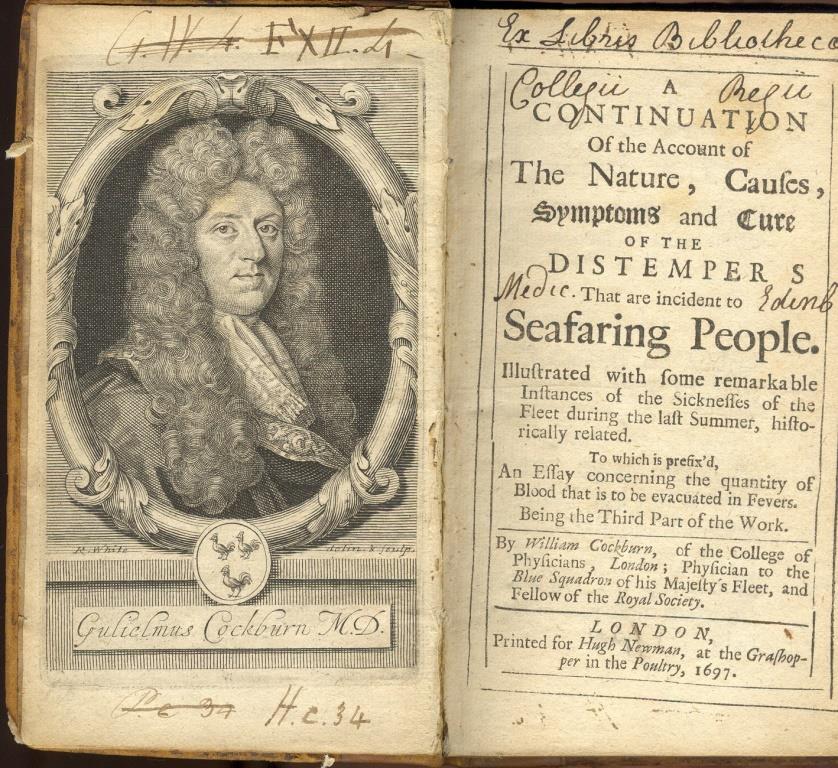
Cockburn, who spent two years as a ship's doctor, noted that fresh vegetables were effective in curing scurvy but argued that the disease was caused by idleness and recommended daily exercise as a preventative measure.
A practical guide for doctors and patients which discusses a wide range of diseases and symptoms, analysing possible causes and prescribing the course of action. Among the diseases described are epilepsy, dysentry, apoplexy and scurvy.
Lind studied and summarised the available literature on scurvy in his Treatise. One of the books he used is this rare treatise on British herbs possibly effective against scurvy.
Lind consulted this comprehensive bibliography of medicine arranged by subject with an author index.
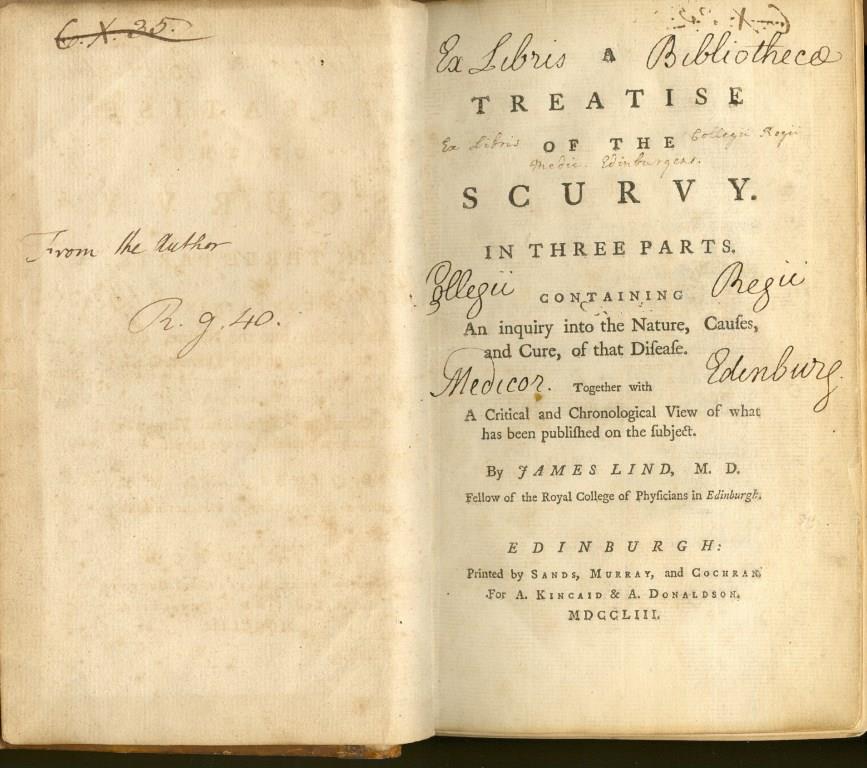
Lind conducted his famous trial in May 1747 when he was the ship’s surgeon on HMS Salisbury, which was enforcing a blockade in the English Channel.
The Treatise was translated into German, Dutch, French and Italian.
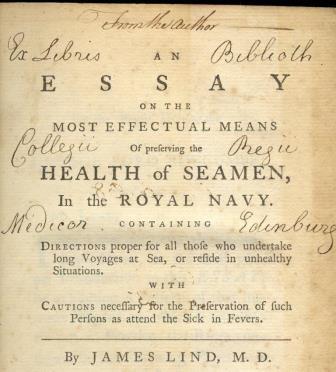
In this practical and plainly written book Lind sets out his plan for better hygiene on ships and for more humane treatment of seamen. He recommends that ships should be regularly fumigated and ventilated and the seamen obliged to take regular baths. They should be given uniforms rather than having to bring their own clothes aboard the ship. Diet should be improved – pickled vegetables and the extract of oranges and lemons should be carried and ships regularly supplied by small boats bearing fresh vegetables. The drinking of spirits should be discouraged and safe drinking water obtained by distillation.
Having made recommendations for the improvements of the health of seamen, in his final book Lind goes further to ‘draw the attention of all the commercial nations of Europe towards the important object of preserving the health of their countrymen, whose business caries them beyond seas’. In his usual meticulous style, Lind reviewed everything that had been written on the subject, and surveyed the tropics, port by port, discussing the diseases peculiar to each locality. He identified ‘fevers’ as the commonest and most dangerous and then gives his recommendations as to how to prevent them, which mainly involve avoiding swampy conditions which gave rise to pestilential vapours.
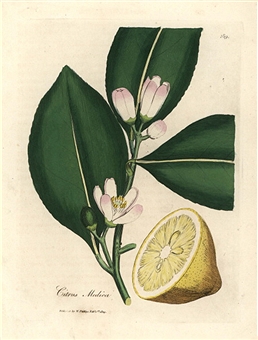
Woodvillle was a physician to the Smallpox Hospital at St. Pancras in London. He bought land surrounding the hospital and made it into a botanical garden. His Medical Botany was published in 4 volumes from 1790-94. It contains illustrations, descriptions and medicinal properties of all the plants contained in contemporary pharmacopoeias.
Woodville says of lemons:
‘As an antiscorbutic, lemon juice is also very generally taken on board ships destined for long voyages, but it is found to spoil by long keeping ; to prevent which various means have been devised.’
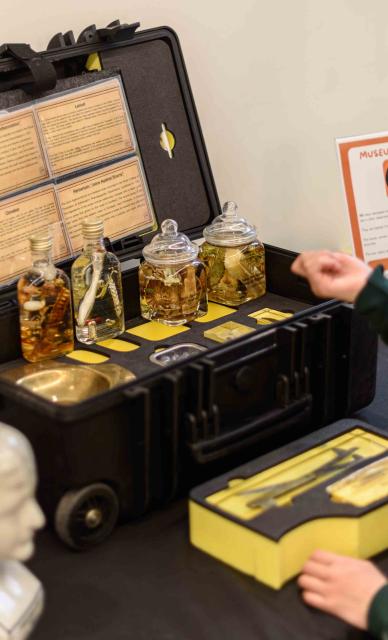
Support us
As a charity we rely on your donations to fund our free exhibitions, school activities and online resources